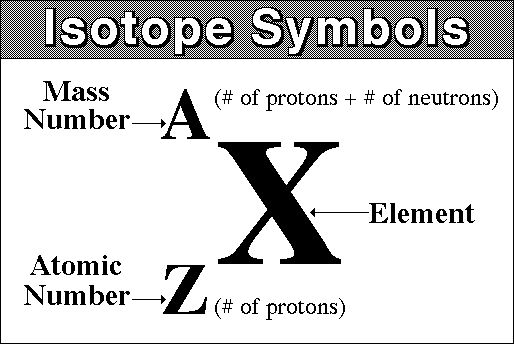Details of an Atom
Inside the Nucleus
The key information for subatomic particles are shown below:
Particle, Charge, Relative Mass
- Protons, +1, +1
- Neutron, 0, +1
- Electron, -1, 0
An atom normally has the same number of protons and electrons. This means that the overall charge of an atom is zero or neutral. This is because the charge from all of the protons combined ‘cancels out’ the overall charge from all of the electrons.
Nuclide Notation
The constituents of atoms are shown in a particular way known as nuclide notation. The general form is given below:
As above, the mass number is both protons and neutrons and the atomic number is just protons.
Sometimes the atomic number is also called the proton number.
If you need to work out how many neutrons there are in an atom then you need to minus the atomic number from the mass number or:
Number of neutrons = A - Z
Let’s look at an example:
This tells us that there are:
Protons: 17
Neutrons: 35 - 17 = 18
Electrons: 17 (Remember same as the number of protons)
Isotopes
An isotope is an element that has a certain number of neutrons. This means that not all elements have the same number of neutrons, but they must have the same number of protons. All atoms are isotopes.
Ions
In the event where an atom has gained or lost electrons, it is no longer neutrally charged and is called an ion. If an isotope has gained electrons it is a negative ion. If an isotope has lost electrons it is a positive ion.

